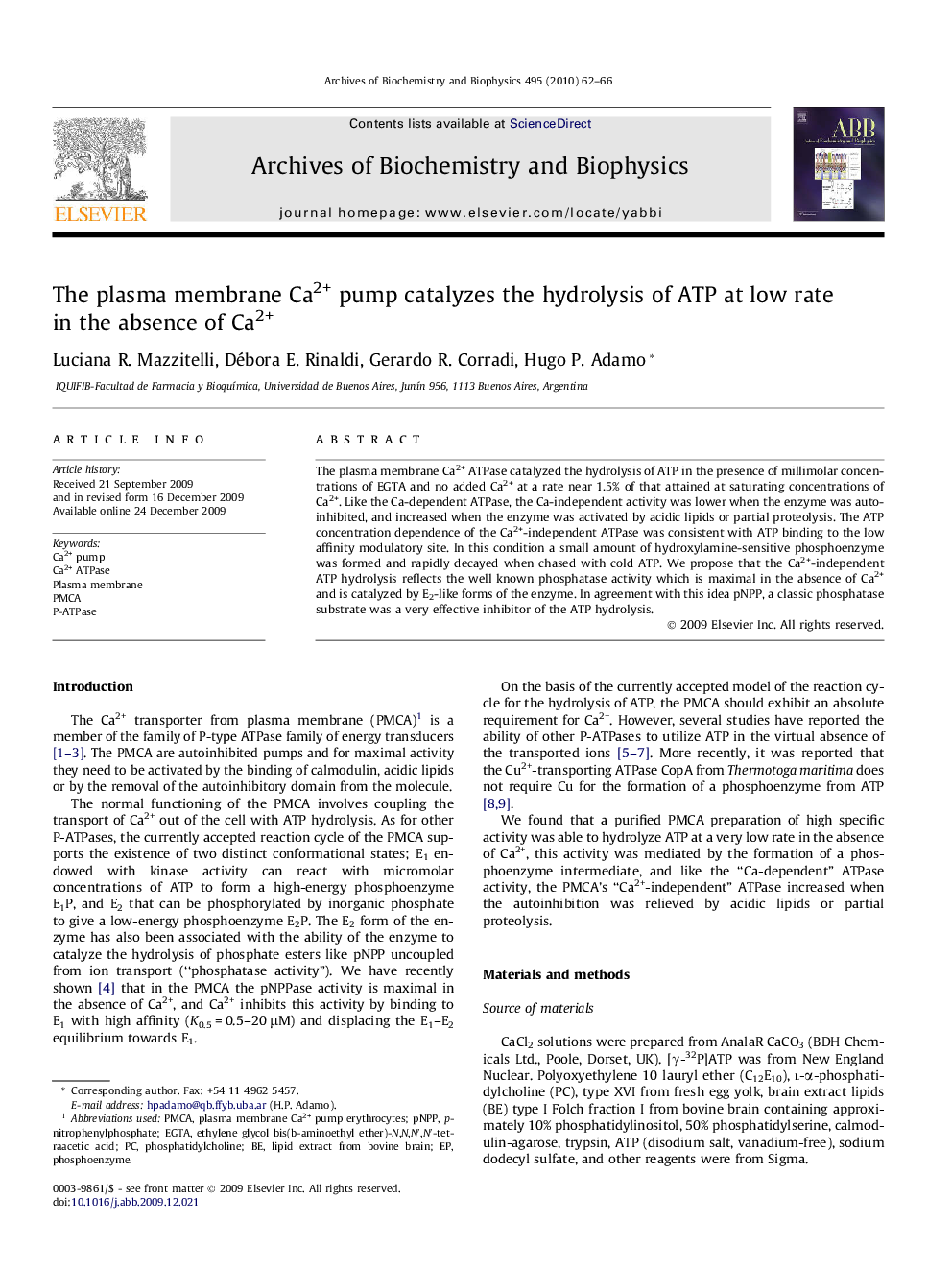| Article ID | Journal | Published Year | Pages | File Type |
|---|---|---|---|---|
| 1926169 | Archives of Biochemistry and Biophysics | 2010 | 5 Pages |
The plasma membrane Ca2+ ATPase catalyzed the hydrolysis of ATP in the presence of millimolar concentrations of EGTA and no added Ca2+ at a rate near 1.5% of that attained at saturating concentrations of Ca2+. Like the Ca-dependent ATPase, the Ca-independent activity was lower when the enzyme was autoinhibited, and increased when the enzyme was activated by acidic lipids or partial proteolysis. The ATP concentration dependence of the Ca2+-independent ATPase was consistent with ATP binding to the low affinity modulatory site. In this condition a small amount of hydroxylamine-sensitive phosphoenzyme was formed and rapidly decayed when chased with cold ATP. We propose that the Ca2+-independent ATP hydrolysis reflects the well known phosphatase activity which is maximal in the absence of Ca2+ and is catalyzed by E2-like forms of the enzyme. In agreement with this idea pNPP, a classic phosphatase substrate was a very effective inhibitor of the ATP hydrolysis.
